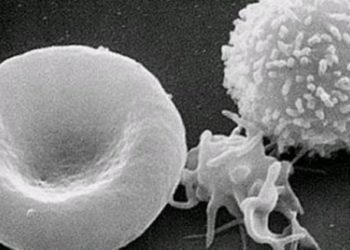Duodenal microbiota linked with environmental enteric dysfunction
1. The microbiota in the duodenum and the pathological characteristics of environmental enteric dysfunction (EED) that are associated with growth stunting were shown to have a causal relationship.
2. Plasma proteins correlating with duodenal proteome features and duodenal bacterial taxa were shown to represent candidate EED biomarkers.
Evidence Rating Level: 1 (Excellent)
Study Rundown: Environmental enteric dysfunction (EED) is a small intestinal disease associated with growth stunting. The histopathological changes of EED includes a reduction in the number and height of intestinal villi, epithelial barrier disruption, and a chronic inflammatory infiltrate. Understanding the causative factors contributing to EED can provide information on the potential relationship between EED and growth stunting. As such, this study examined the role of the duodenal microbiota in EED pathogenesis and the relationship of the disease on growth stunting. The results demonstrated a causal relationship between EED pathogenesis and growth stunting by studying the duodenal microbiota. This study was limited by absence of duodenal microbiota information from healthy children. Without the information from healthy children, conclusions regarding differences between EED-infected children and healthy children cannot be determined from the study. Nonetheless, this study was strengthened by the validation of the causal relationship between bacteria from the duodenums of EED-infected children and enteropathy in a mouse model.
Click to read the study, published today in NEJM
Relevant Reading: Use of quantitative molecular diagnostic methods to investigate the effect of enteropathogen infections on linear growth in children in low-resource settings: longitudinal analysis of results from the MAL-ED cohort study.
In-Depth [prospective cohort]: This prospective cohort study enrolled 525 patients through the Bangladesh Environmental Enteric Dysfunction (BEED) study and followed the participants for three months. Participants were included if they met criteria for growth stunting or being at risk for growth stunting. Participants that were within one standard deviation below a length-for-age z score reference from the World Health Organization were excluded from the study. All of the participants were administered a nutritional intervention. From this cohort, the participants that did not respond to the nutritional intervention underwent the esophagogastroduodenoscopy (EGD) procedure to collect plasma, fecal samples, duodenal aspirates, and duodenal biopsy samples. The samples were used for proteomic assays, enteropathogen detection, and gnotobiotic mice studies. After the nutritional intervention, 110 children (mean [±SD] age, 18±2 months) did not respond to the intervention and underwent the EGD procedure. The plasma proteomes from the 110 children revealed the protein levels of insulin-like growth factor 1 (IGF-1), IGF binding protein 2 (IGFBP-3), and procollagen C endopeptidase enhancer 2 (PCOLCE2) were positively correlated with length-for-age z score. Furthermore, 80% (n, 28) of the obtained aspirates contained bacteria from 14 different taxa. There were significantly elevated levels of veillonella species, the bacterium most positively correlated with proteins involved in duodenal inflammation, in the fecal samples of the participants with EED compared to healthy children (P=0.001; Q=0.01). Finally, the mice studies found duodenums with an inflammatory infiltrate in the lamina propria, disruption of epithelial cells, and crypt elongation. Taken together, a causal relationship existed between the duodenal microbiota and EED pathogenesis causing growth stunting.
Image: PD
©2020 2 Minute Medicine, Inc. All rights reserved. No works may be reproduced without expressed written consent from 2 Minute Medicine, Inc. Inquire about licensing here. No article should be construed as medical advice and is not intended as such by the authors or by 2 Minute Medicine, Inc.






